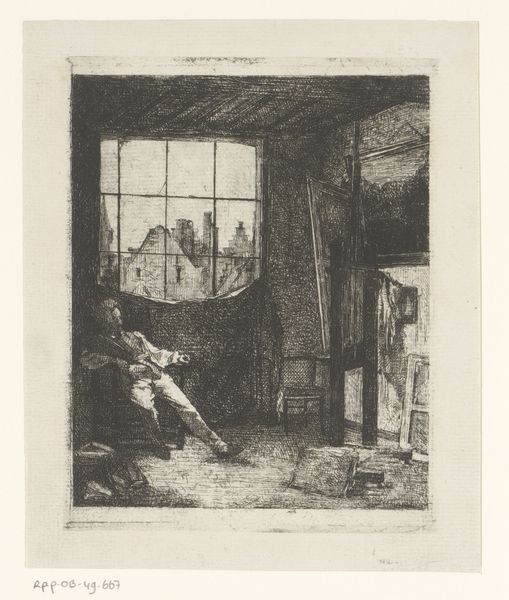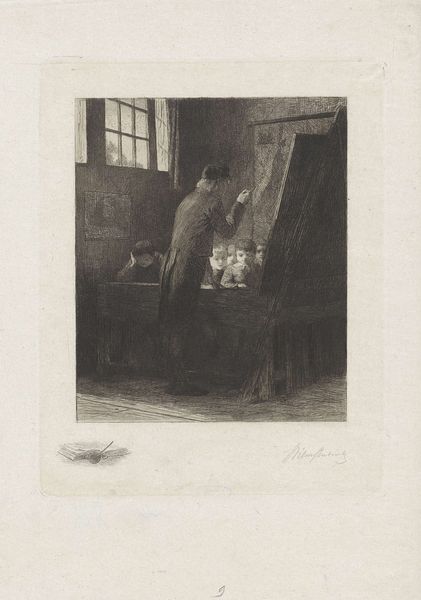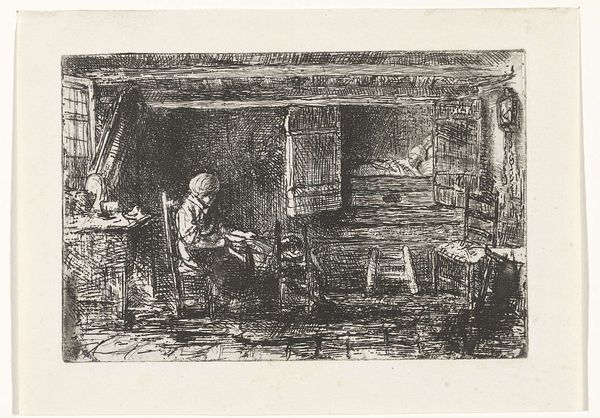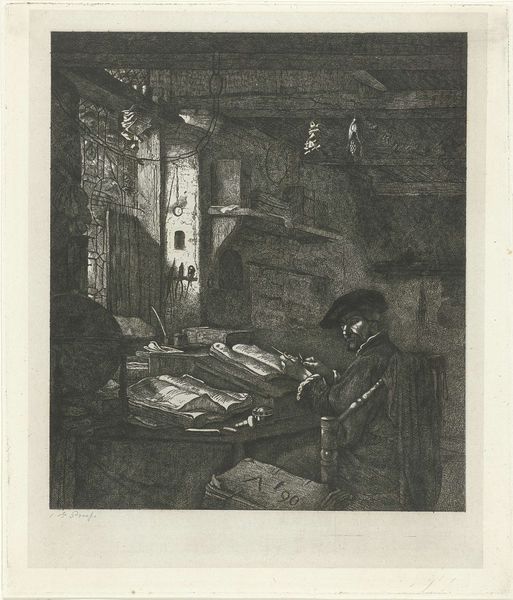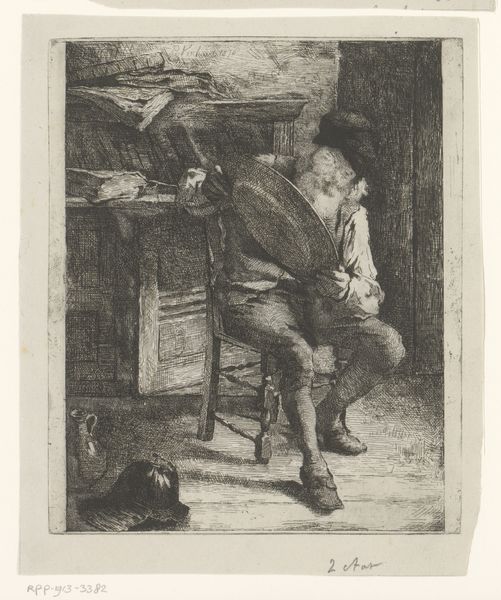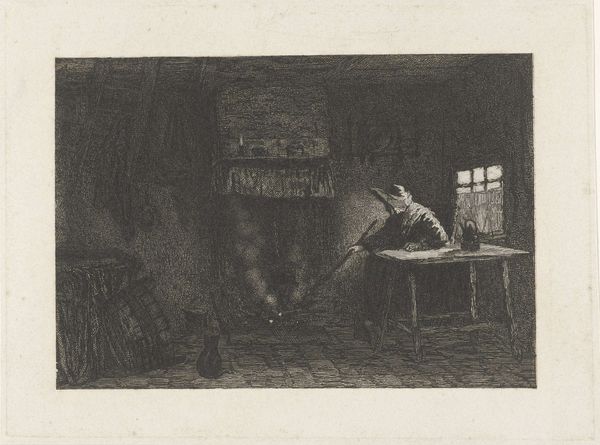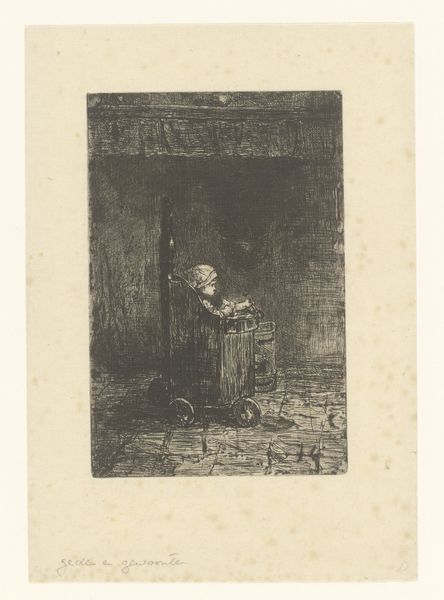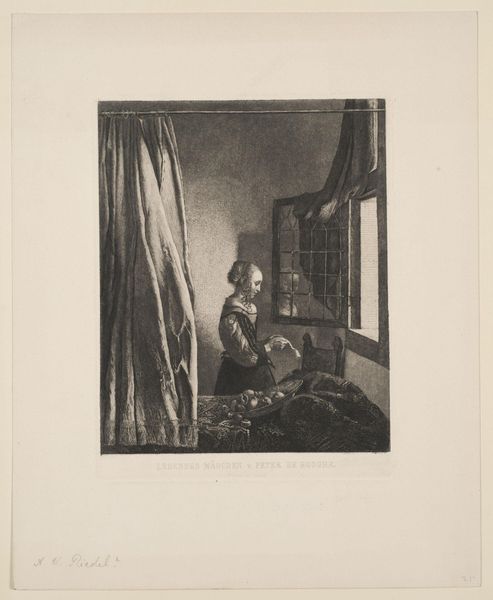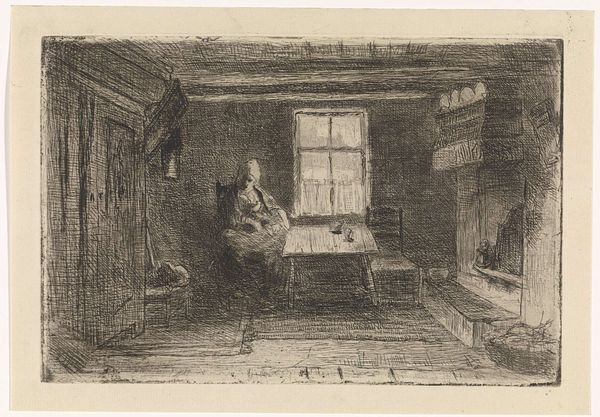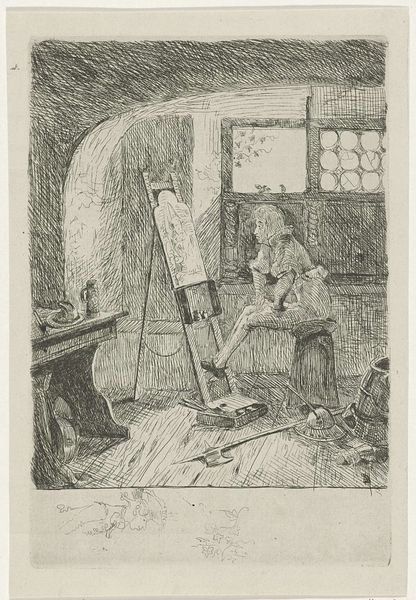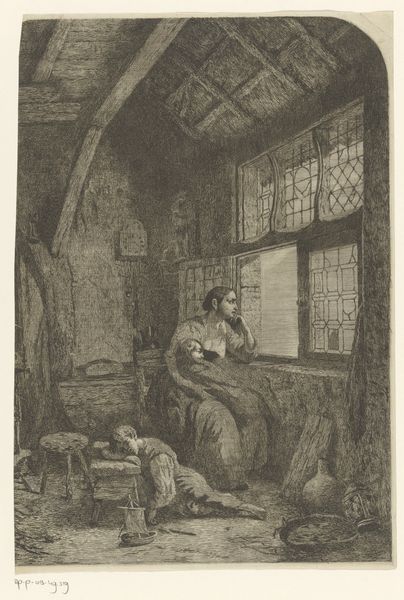
drawing, print, etching, paper
#
portrait
#
drawing
# print
#
etching
#
etching
#
paper
#
line
#
genre-painting
#
realism
Dimensions: height 180 mm, width 125 mm
Copyright: Rijks Museum: Open Domain
Curator: Ary Johannes Lamme's "Lezende man", likely from sometime in the 19th century, catches the eye, doesn't it? It’s a genre painting realized as an etching, so paper supports everything here. Editor: A solitary sort of scene, imbued with this incredibly still atmosphere. The etching feels delicate, but there is such contrast from the brilliant light that seems to penetrate all the dark shadows of the room. What can you tell me about the etching technique? Curator: Well, etching allows for incredibly fine detail. It is produced by the artist using acid to bite lines into a metal plate, which is then inked and printed, rendering the drawing onto paper. With close observation here, you can also detect linear strokes that construct tones and texture throughout this little world Lamme’s created. He might be offering the viewer the life of an artist within a dark studio—you even see light that seems to cast onto objects on the floor on the lower right, near an old coat or cloth, maybe the man's discarded clothing? It's suggestive, isn't it? Editor: Indeed. Considering his focus on "realism," one has to think about how an artist creates those perceived realist effects with materials like ink, paper, and, notably, acid. There is labor evident at all scales. But realism in this piece seems like a very romantic notion, you know? One could even argue it’s staged—even manufactured to make someone appear to labor, even read, inside a claustrophobic chamber. Curator: Staged or not, look how that light finds its way in to the scene! I feel almost like I am looking at a Rembrandt print—it uses its blacks and whites to dramatic effect. One has to appreciate that, staged or no staged, so many artists worked for hours on end to complete their artistic mission during that century. And you find yourself asking—What story unfolds within that concentrated gaze? Editor: I see the story of the printing press itself! I mean, paper was becoming so much more accessible at this time, as well as the artistic tools to print drawings, ideas, etc. on a massive scale. And for people of the merchant class and below, that has value beyond a single drawing like this. Curator: Absolutely, printing became a method of conveying one’s ideas more rapidly—and distributing more quickly. I will concede to your fine argument here. And even that, captured inside this piece, contributes a bit of poetic realism that extends outside its actual lines! Editor: And so, another intersection of method, meaning, and, of course, the artist’s mysterious imagination, comes together for the viewer to absorb, even now. Curator: A small piece of a long and ongoing history! Thank you, truly.
Comments
No comments
Be the first to comment and join the conversation on the ultimate creative platform.
